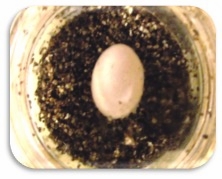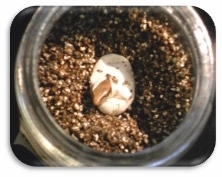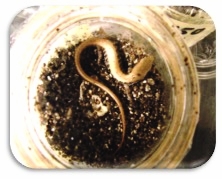Research Overview
Figure 1—Schematic of the mechanisms driving responses to environmental change. Responses are mediated by the phenotypic tolerances of individuals (e.g., physiology, morphology, and behavior). Phenotypes are unlikely to remain static as environments change but will instead shift through evolution and plasticity. I use an integrative approach, combining experiment and modeling, to explore each arrow.
We integrate across biological organization to explore the mechanisms that drive species’ responses to global change. Responses to changing environments are complex, encompassing most biological processes (outlined in Figure 1). Most directly, the phenotype of individuals drive population response, but phenotypes vary as a result of phenotypic plasticity and evolution. We iterate between experiment and mathematical modeling to directly address how phenotype, genotype and environment interact to shape species' responses to global change.
Major goals of the TREE Lab are to 1 ) identify the organismal traits and environmental parameters that most limit species' persistence, 2 ) examine the ability of organisms to respond to environmental variation through adaptive evolution or phenotypic plasticity, 3 ) develop models that examine the effects of environmental variation on populations while accounting for evolutionary processes and phenotypic plasticity, and 4) work with managers to convert our results into actionable management practices. To do this, we integrate field and laboratory experiments with ecological modeling. We also integrate multiple "toolkits" including those associated with functional genomics, cellular physiology, behavioral ecology, thermal physiology, endocrinology, geometric morphometrics, and theoretical ecology. Currently we primarily work with two systems: fence lizards of the genus Sceloporus (mostly S. occidentalis and S. undulatus) and federally endangered Blunt-nosed Leopard Lizards (Gambelia sila).
Written descriptions of each of our main research foci are below. You can also check out recordings of some of our recent scientific conference presentations at the Research Recordings Page.
Research Foci:
phenotypic plasticity and microevolution In Response to climate change
Most analyses of species responses to climate change assume that species are uniform groups of individuals with stationary phenotypic characteristics that perfectly disperse to suitable habitats. These assumptions are clearly violated in nature but the impact of these violations on our understanding of species responses to climate change is uncertain. We recently collaborated with Lauren Buckley and Michael Angilletta to estimate phenotypic variation and phenotypic plasticity in the Sceloporus undulatus species complex. Currently, we are collaborating with Tonia Schwartz at Auburn University to leverage transciptomics to identify networks that plastically respond to environmental variation.
Ecology and Conservation of Blunt-nosed leopard lizards
Blunt-nosed leopard lizards (Gambelia sila, also referred to as BNLL) are a federally endangered species endemic to the San Joaquin Desert of central California. Despite being one of the inaugural species listed under the Endangered Species Act, we still know relatively little about these charismatic desert lizards and their numbers in the wild continue to decline. The TREE lab is part of a multi-institution effort to better conserve and study these amazing animals. Our collaborators include Dr. Michael Westphal with the US Bureau of Land Management, Mark Halvorsen and Lynn Myers with the Fresno Chaffee Zoo, and Emily Taylor’s PERL lab at Cal Poly San Luis Obispo. Together, our team is monitoring key populations throughout the range via radiotelemtery, while also collecting data on the thermal ecology, hydric ecology, predation pressures, and life history of this species.
Comparative THERMAL PHYSIOLOGY
The thermal environment defines a major axis of the fundamental niche for reptiles and many other organisms. While we know many reptiles are at risk of decline resulting from increased temperatures associated with climate change, little is known about which physiological traits are most affected by the thermal environment, or the capacity of these traits to change through phenotypic plasticity or adaptive evolution. We use an integrative approach to discover the mechanisms that limit thermal tolerance, including transcriptomics via RNAseq, respirometry (cellular and whole-organism), metabolomics (GC-MS), and hormone analyses). We are currently examining the importance of the oxygen environment for mediating thermal tolerance. We also aim to look at how thermal performance can interact with competitive ability to limit geographic distributions.
Effects of temperature on developing reptiles
Embryonic development is a time when reptiles, and many other organisms, are highly sensitive to their environment. In reptiles, thermal and hydric variation can have profound effects on offspring phenotype and survivorship. Perhaps most notably, many reptile species display temperature-dependent sex determination, where temperature directly determines the sex of the offspring. A large focus of TREE Lab research is examining how the incubation environment affects offspring development, and how this sensitivity affects the overall ecology and evolution of species. Current work is examining the effects of natural incubation environments on development of the New Caledonian Crested Gecko (Correlophus ciliatus).
Effects of environmental variation on maternal behavior
One way that natural populations of oviparous reptiles might cope with climate change is if females alter nesting behavior adaptively. Females might compensate for warming temperatures by digging deeper nests, nesting at shadier sites, or nesting earlier in the year. We are very interested in addressing the question "Will this work?" for each of these possibilities. Telemeco's recent research with Sceloporus tristichus lizards suggests that nesting plasticity rarely buffers populations whenever climate change is expected to result in novel environments. (Figure. Left: Bassiana duperreyi with eggs, Middle: Experimental arenas for assessing nesting behavior, Right: Chrysemys picta digging her nest)
Morphological evolution in alligator lizards
The southern alligator lizard (Elgaria multicarinata) is currently recognized as a single species. However, recent molecular analyses by Feldman and Spicer (2006) suggest that this species represents 2–4 cryptic species. We are collaborating with Chris Feldman at the University of Nevada, Reno and Brian Lavin to combine and morphological data to test various phylogenetic hypotheses for this complex.
Top left: southern alligator lizard (Elgaria multicarinata) head photograph for morphometric analysis. Top right: representative photographs of hemipenes from (A, B) E. multicarinata and (C, D) E. panamintina. Bottom left: deformation grids displaying head shape variation in 5 E. multicarinata/panamintina complex clades. Bottom right: PCA plot of hemipene shape variation in 5 E. multicarinata/panamintina complex clades













